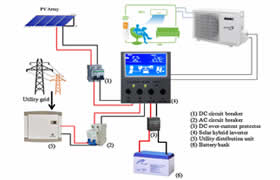Energy efficiency and cost saving opportunities in public and commercial buildings in developing countries : The case of air-conditioners in Ghana
Available data and market surveys conducted in Ghana have shown that 60e80% of electricity consumed in offices of public and commercial buildings is used to run air-conditioners to provide indoor thermal comfort for productive office work. Electricity consumptions of these air-conditioners are relatively high and are in the range of 3000e5400 kWh/yr per air-conditioner depending on the brand and the cooling capacity. Low energy efficiency rating of the air-conditioners is a major contributing factor to their high electricity consumption. This present work has conducted studies on the energy efficiency of air-conditioners used in the offices of public and commercial buildings in Ghana. Technical data from a national survey conducted on air conditioning equipment used in the country was used for this study. In addition, a power quality clamp meter was used to monitor the actual power consumptions of stratified samples of the conventional air-conditioners in the offices, as well as that of an inverter air-conditioner installed in an office.
The results from this study show that over 85% of air-conditioners used in Ghana exist in the lowest energy efficiency ratio category (1-star) and the remaining percentages are in the next lower categories (2 and 3-stars). It has been determined that enforcing energy efficiency regulations to shift the air conditioner market in Ghana into the higher energy efficiency ratio (EER) categories has huge benefits for the country. For instance, there are annual electricity savings potential of 260 GWh and 1770 GWh respectively for the year 2020 and 2030 using inverter air-conditioners which have higher energy efficiency rating (4-star equivalent) compared to the current lower EER air-conditioners in the country. It is also determined that if Ghana continues to follow business as usual with low EER air-conditioners, it will need to install electricity generation capacity of about 480MW by 2030 to handle influx of low energy efficient air-conditioners alone. Financial analysis has also revealed that there is opportunity for electricity consumption cost savings of about US$ 1.96 billion from the year 2018e2030 with higher EER air-conditioners (4-star) being installed in the country compared to the current low EER air-conditioners.
https://www.sciencedirect.com/science/article/pii/S0959652619315872
